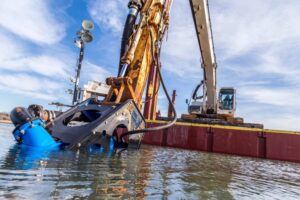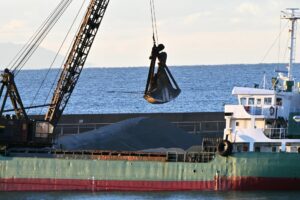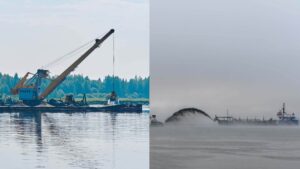Sand dredging efficiently removes sediment and debris from water bodies, which is crucial for mining, construction, and environmental restoration projects. It is also essential for maintaining navigable waterways, extracting valuable minerals, and managing coastal erosion. Whether used in large-scale mining operations or smaller maintenance projects, these machines ensure a steady supply of sand for various industrial and commercial applications.
One of the most common uses of sand dredging equipment is in waterway management, particularly with river sand dredging equipment. Rivers naturally accumulate sediment over time, leading to reduced depth and increased flood risks. By utilizing dredging systems, operators can restore proper water flow and prevent blockages that could impact surrounding ecosystems and infrastructure.
Similarly, lake dredging equipment is widely employed to manage sedimentation in lakes, reservoirs, and ponds. Excess sediment can degrade water quality, disrupt aquatic habitats, and reduce reservoir storage capacity. Proper dredging operations help mitigate these issues, ensuring long-term sustainability.
However, dredging operations come with challenges. Equipment failures, blockages, and reduced suction efficiency can significantly impact productivity. Understanding common issues and implementing effective troubleshooting strategies are essential to maintaining smooth operations and minimizing downtime in both lake dredging equipment and river-based dredging systems.
Understanding How Sand Dredging Equipment Works
Sand dredging equipment is designed to efficiently remove, transport, and discharge sediment from bodies of water, ensuring smooth navigation and preventing excessive buildup. Whether used in rivers, lakes, or coastal areas, these machines rely on several critical components to operate effectively.
Key Components of Dredging Systems
- Dredge Pumps and Impellers – These powerful pumps generate the suction needed to extract sediment and transport it through pipelines. The impellers inside the pumps help maintain consistent slurry flow, ensuring optimal dredging performance.
- Cutterheads, Augers, and Suction Systems – Cutterheads and augers break down compacted materials, making them easier to pump. Suction systems then transport the sediment through hoses or pipelines to the discharge location.
- Pipelines and Discharge Systems are essential for transporting dredged material from the water body to a designated disposal or processing site. Properly maintained pipelines prevent blockages and maintain efficient flow.
- Floatation Devices and Positioning Systems – Buoyancy devices keep dredging pipelines afloat, while GPS and automated positioning systems help operators navigate and optimize dredging patterns.
Differences Between River and Lake Dredging Equipment
River sand dredging equipment operates in dynamic environments with strong currents, fluctuating water levels, and varying sediment compositions. These systems must be designed to handle high debris loads, such as tree branches and rocks, which can obstruct suction in fast-moving waters. Additionally, operators must frequently adjust dredging depth and positioning to adapt to changing river conditions.
On the other hand, lake dredging equipment is often used in more controlled environments with stagnant water and minimal current. However, lakes present challenges such as varying depths, thick sediment layers, and environmental restrictions that require specialized dredging techniques. Operators using river sand dredging equipment must focus on power and adaptability, whereas those handling lake dredging equipment must prioritize precision and environmental preservation.
Common Suction and Pumping Issues
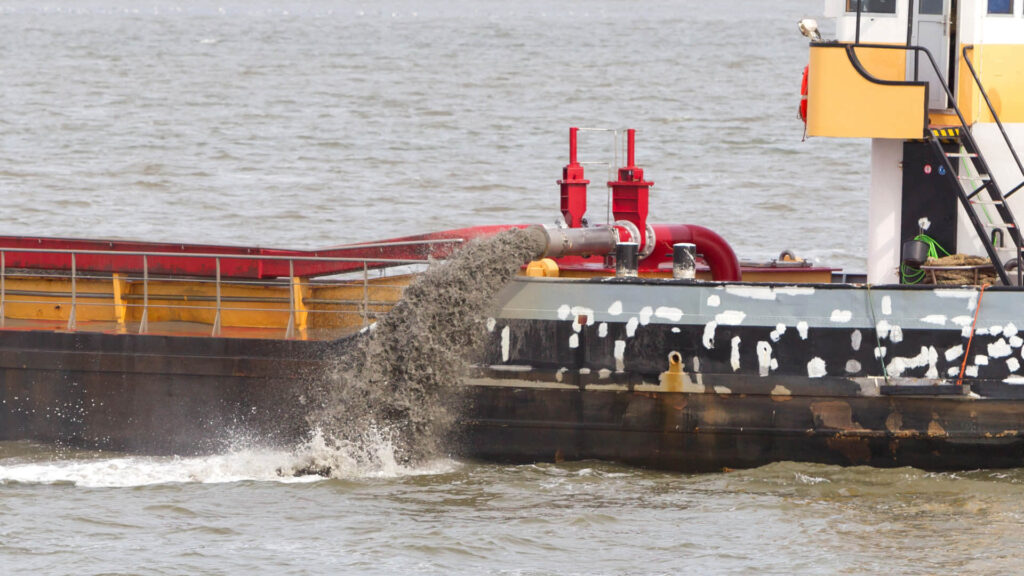
Efficient operation of sand dredging equipment depends on maintaining proper suction and pump performance. Issues like low suction pressure, reduced flow, cavitation, or vibration can significantly impact productivity. Identifying the root causes and applying effective troubleshooting methods can help ensure uninterrupted dredging operations, whether working with river sand or lake dredging equipment.
A. Low Suction Pressure and Reduced Flow
One of the most frequent challenges operators face is a drop in suction pressure, which leads to slow material movement and air pockets forming in the pipeline. This can be particularly problematic in river sand dredging equipment and lake dredging equipment, where varying sediment compositions and environmental conditions affect suction performance.
Causes:
- Blocked suction lines or clogged filters restrict material flow
- Air leaks in suction hoses cause pressure loss
- Incorrect pump speed or impeller damage reducing efficiency
Solutions:
- Regularly inspect and clear suction lines to remove debris and sediment buildup
- Check hoses and fittings for leaks, sealing any damaged connections
- Adjust pump speed settings and replace worn or damaged impellers to maintain optimal flow
B. Pump Cavitation and Vibration Issues
Cavitation occurs when air or gas bubbles form inside the pump, leading to excessive vibration, unusual noises, and reduced efficiency. This issue is particularly common in sand dredging equipment operating in fluctuating water levels, such as river and lake dredging equipment.
Causes:
- Air or gas entering the pump due to leaks or improper suction depth
- Excessive pump speed creates turbulence and disrupts the flow
- Inadequate submersion of the suction head, leading to intermittent suction loss
Solutions:
- Reduce pump speed to stabilize suction and minimize cavitation risk
- Ensure the suction head remains properly submerged to maintain consistent flow
- Conduct routine inspections of pump seals and connections to prevent air intake
Addressing these common suction and pumping issues can help operators maximize the efficiency and longevity of their sand dredging equipment, ensuring smooth operations in river and lake dredging environments.
Handling Mechanical Failures in Dredging Equipment

Mechanical failures are among the most common challenges faced by operators using sand dredging equipment. Due to the abrasive nature of sediment, cutter heads, augers, and pipelines are subjected to constant wear and tear, making regular maintenance crucial. Whether working with river sand dredging equipment or lake dredging equipment, addressing mechanical failures promptly can prevent costly downtime and inefficiencies.
A. Wear and Tear of Cutterheads and Augers
Cutterheads and augers play a vital role in breaking up compacted sediment, allowing for smooth dredging operations. However, over time, they experience degradation, leading to reduced cutting efficiency and difficulty in penetrating hard deposits.
Causes:
- Overuse and improper handling of the cutter head lead to premature dulling
- Dredging in highly abrasive materials without reinforced components causes accelerated wear
- Insufficient lubrication of moving parts, resulting in increased friction and damage
Solutions:
- Use wear-resistant cutter heads specifically designed for high-abrasion environments
- Implement a regular sharpening and replacement schedule to maintain cutting efficiency
- Ensure proper lubrication of moving parts to reduce friction and extend the lifespan of sand dredging equipment
B. Pipeline Blockages and Material Accumulation
Blockages in pipelines are a significant issue that can drastically reduce output and increase pressure buildup within the system. Due to variations in sediment type and debris accumulation, this problem is particularly common in lake dredging equipment and river sand dredging equipment.
Causes:
- Large debris entering the system and obstructing material flow
- Poor pipeline design, leading to sediment buildup and flow restrictions
- Incorrect velocity of the pumped slurry, causing uneven material distribution
Solutions:
- Install debris screens on suction intakes to prevent large particles from clogging the system
- Maintain the proper pipeline diameter and flow rates to ensure smooth sediment transport
- Regularly flush pipelines to clear accumulated sediment and prevent blockages
Properly maintaining sand dredging equipment ensures operational efficiency, reduces downtime, and extends the lifespan of critical components. Whether dealing with lake dredging equipment or river sand dredging equipment, a proactive approach to mechanical failures can significantly improve productivity and long-term equipment reliability.
Electrical and Hydraulic System Failures
Electrical and hydraulic systems are critical components of sand dredging equipment. They ensure the smooth operation of pumps, cutter heads, and other mechanical functions. Any failure in these systems can lead to operational inefficiencies, downtime, and costly repairs. Proper maintenance and troubleshooting of these systems are essential for sustained performance, whether using river sand or lake dredging equipment.
A. Hydraulic System Malfunctions
Hydraulic systems power essential dredging components, such as cutter heads, suction arms, and positioning systems. A failure in the hydraulic system can result in sluggish equipment movement or complete loss of pressure, significantly reducing dredging efficiency.
Causes:
- Contaminated hydraulic fluid reduces system efficiency
- Leaks in hoses or cylinder seals cause loss of hydraulic pressure
- Overheating due to excessive load on the system
Solutions:
- Regularly change hydraulic fluid and filters to maintain smooth operation
- Inspect hoses and seals for wear, replacing them as needed to prevent leaks
- Monitor hydraulic temperature and avoid overloading the system to prevent overheating
Proper maintenance of hydraulic systems ensures sand dredging equipment operates at peak efficiency, minimizing unexpected breakdowns and costly downtime.
B. Electrical and Control Panel Issues
Electrical failures in sand dredging equipment can cause system shutdowns, erratic pump behavior, and sensor malfunctions. These issues are particularly problematic in river and lake dredging equipment, where stable electrical control is crucial for precise dredging operations.
Causes:
- Loose or corroded electrical connections lead to intermittent failures
- Faulty sensors and control units causing inaccurate readings or malfunctions
- Power fluctuations affecting motor performance and pump efficiency
Solutions:
- Conduct regular electrical inspections, tightening loose connections and cleaning corroded contacts
- Replace faulty sensors and recalibrate control systems to maintain accurate dredging parameters
- Use surge protectors and voltage stabilizers to prevent damage from power fluctuations
By proactively maintaining hydraulic and electrical systems, operators can improve the reliability of sand dredging equipment, ensuring smooth and efficient dredging operations in both river and lake environments.
Environmental and Operational Challenges
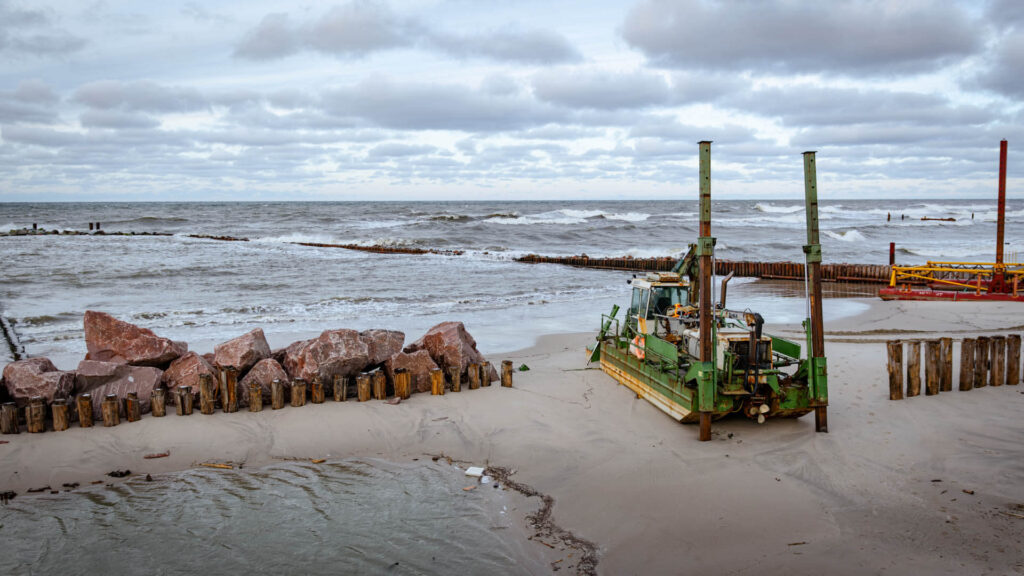
Environmental and operational factors often impact dredging operations, influencing efficiency and equipment performance. Whether working in rivers or lakes, operators must adapt to varying water conditions, sediment types, and regulatory requirements. Properly understanding these challenges ensures smooth operations and helps prevent equipment damage and environmental disturbances.
A. Dredging in Varying Water Conditions
River Sand Dredging Challenges
Operating river sand dredging equipment presents unique difficulties due to strong currents, fluctuating water levels, and high sediment loads. Unpredictable river conditions can lead to unstable dredging operations, increasing wear on components such as pumps and cutter heads. Additionally, rivers often contain debris, such as tree branches and rocks, which can obstruct suction and cause blockages. To maintain equipment stability and efficiency, operators must:
- Use advanced positioning systems to counteract strong currents
- Regularly monitor sediment load and adjust dredging depth accordingly
- Implement protective screens to prevent debris from entering the system
Lake Dredging Challenges
Lake dredging equipment operates in relatively stable water conditions but faces challenges such as stagnant water movement and regulatory constraints. Without natural currents to help disperse dredged material, there is a higher risk of silt resuspension, which can impact water quality and aquatic ecosystems. To address these concerns, operators should:
- Follow environmental regulations to minimize disruption to aquatic habitats
- Use precision dredging techniques to limit unnecessary sediment disturbance
- Implement sediment control measures, such as silt curtains, to reduce water contamination
B. Adapting to Different Sediment Types
Fine Sand vs. Coarse Gravel Dredging
The composition of the dredged material significantly affects equipment performance. Fine sand moves easily through pipelines, whereas coarse gravel can cause increased wear and potential blockages. Choosing the right dredge pump and cutter head for each sediment type helps optimize efficiency.
Dealing with High Clay Content Sediments
Clay-rich sediments are often compacted and sticky, making them more challenging to dredge than sand or gravel. To improve material flow, operators can:
- Use agitation systems to loosen compacted clay
- Apply high-pressure water jets to break down sticky deposits
By understanding and adapting to these environmental and operational challenges, dredging operators can enhance performance and extend the lifespan of their equipment.
Conclusion

Troubleshooting and preventive maintenance are essential for ensuring the efficiency and longevity of sand dredging equipment. By addressing common issues such as suction loss, pump cavitation, mechanical wear, and system failures, operators can reduce downtime and improve overall productivity. Regular inspections, proper lubrication, and timely component replacements play a vital role in keeping dredging systems running smoothly.
Proactive maintenance minimizes operational disruptions and extends the lifespan of key components, such as cutter heads, impellers, and hydraulic systems. Preventing blockages, stabilizing suction pressure, and monitoring electrical connections are all critical steps in maintaining reliable dredging operations.
Whether using river sand dredging equipment or lake dredging equipment, following best practices helps optimize performance in different water conditions. Operators should remain vigilant, adapt to environmental challenges, and implement efficient dredging strategies to achieve long-term success. By maintaining equipment properly and addressing issues early, dredging operations can remain cost-effective, productive, and environmentally responsible.




